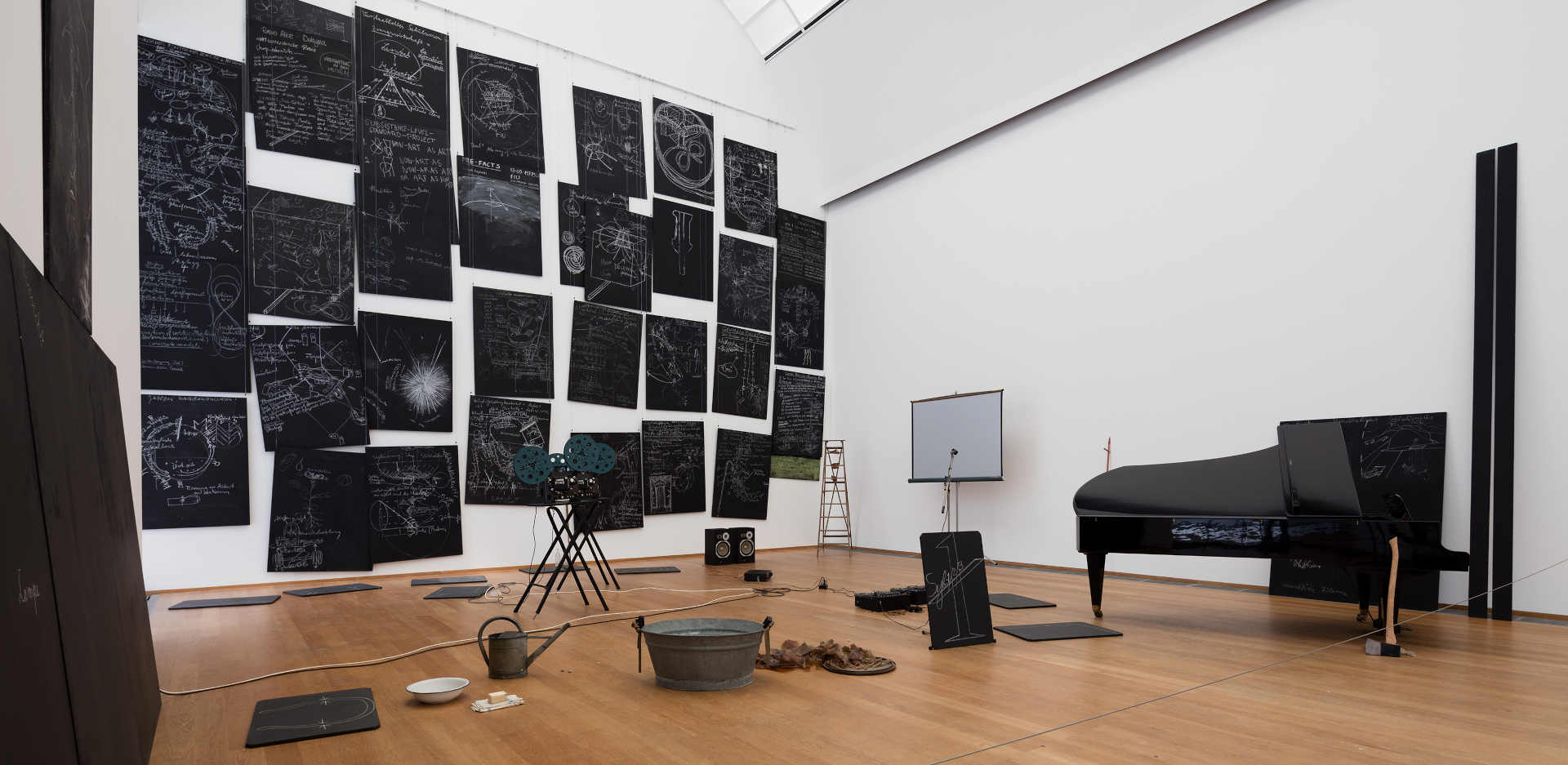
Joseph Beuys (1921-1986) is a name that resonates deeply in the world of contemporary art. This unique German artist is widely recognized as one of Germany's most distinctive exponents of post-war art, whose influence spans multiple disciplines, including drawing, sculpture, performance, video and installation. His art is notable not only for its stylistic originality, but also for its unconventional boldness and profound social commitment.
Throughout this article, we will explore the life and work of Joseph Beuys, delving into the roots of his unique artistic expression and the evolution of his career from the avant-garde movements of the Fluxus Group to his notable foray into ecological consciousness in the 1980s. Joseph Beuys not only challenged the established norms of art, but also provoked profound reflections on the relationship between human nature and society, using unusual materials such as fat, felt and beeswax to convey powerful and symbolic messages.
Through this dive into the life and work of Joseph Beuys, we will discover how he became an iconic and controversial figure on the international art scene and how his contributions continue to inspire artists and challenge the boundaries of artistic expression and social thought.
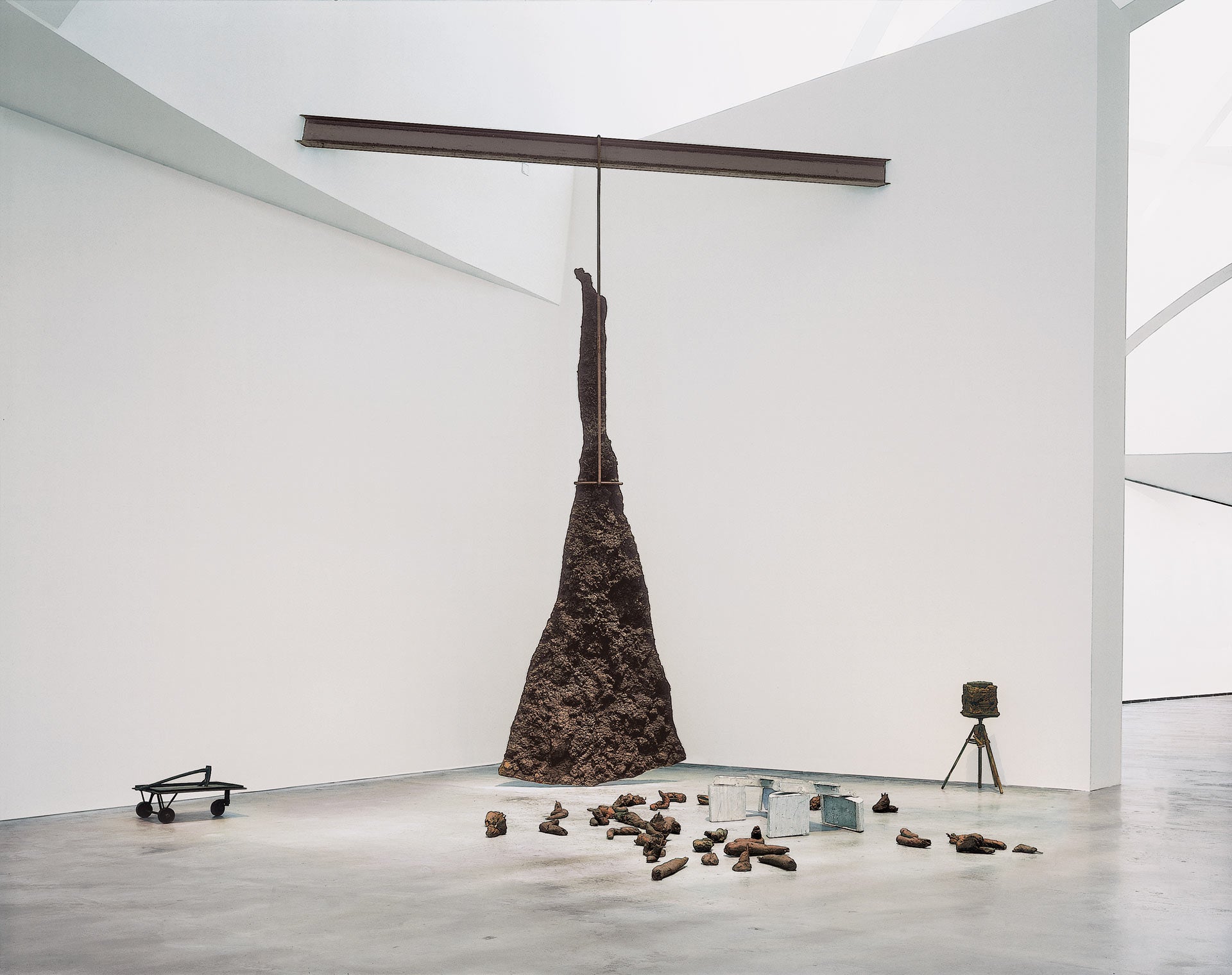
How was Joseph Beuys' artistic evolution?
Joseph Beuys' artistic evolution is notable and marked by several distinct phases in his career. His artistic journey spanned several decades and reflected his adaptation to social, political and cultural changes over time. Here is a summary of Joseph Beuys' artistic evolution:
Formation and Early Influences (1940s - 1950s): Joseph Beuys studied at the Düsseldorf Art Academy in the late 1940s and early 1950s. During this period, he was influenced by expressionism and the work of artists such as Ewald Mataré. His early works were largely traditional sculptures in materials such as bronze and stone.
Fluxus and Conceptual Art (1960s): In the 1960s, Joseph Beuys became involved with the Fluxus movement, which emphasized the fusion of art and life and often incorporated performances and actions into art. He also began experimenting with unconventional materials, such as felt and fat, which would become trademarks of his work. During this period, his performances and artistic actions gained prominence.
Professor and "Social Sculpture" (1960s - 1970s): Joseph Beuys became a professor at the Düsseldorf Art Academy in 1961, and throughout the 1960s he developed the idea of "social sculpture". He saw education as an art form and believed that art could be a transformative force in society. His classes were often political and artistic interactions, and he involved his students in discussions about social issues.
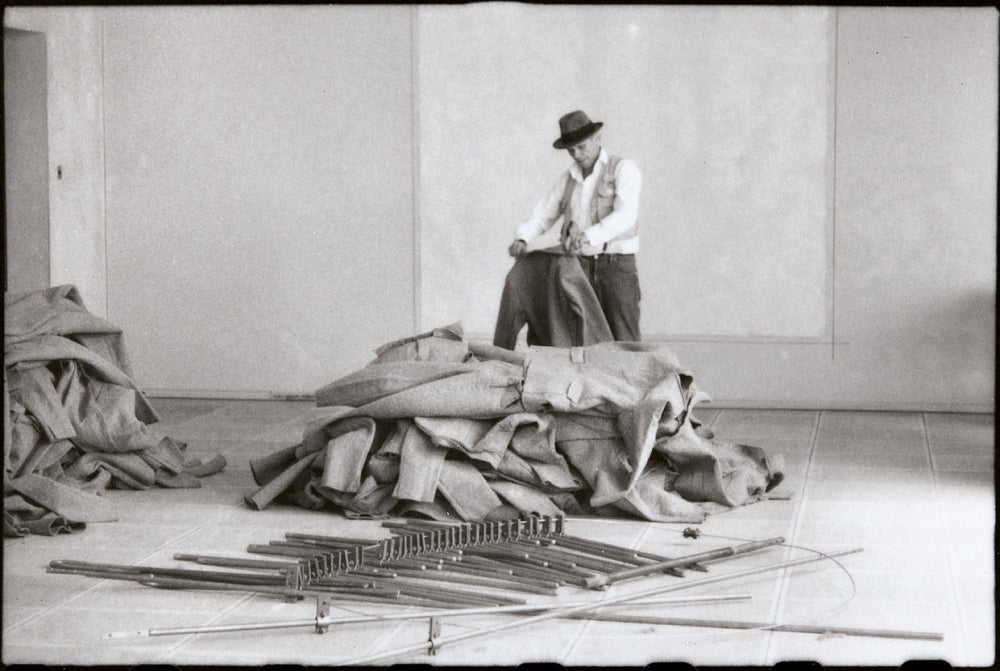
Political Activism (1970s): During the 1970s, Joseph Beuys became further involved in political activism. He founded the "German Student Party" and defended radical political ideas. His work often reflected his activism, addressing issues such as German reunification and reconciliation.
Ecology and Nature (1980s): In the 1980s, Joseph Beuys focused on ecological issues and the relationship between man and nature. Their actions, such as "7000 Eichen" (7000 Oaks), were designed to promote environmental regeneration. Nature and ecology became central themes in his work.
Legacy and Influence (Post-death): Joseph Beuys passed away in 1986, but his legacy continued to influence contemporary art. His multifaceted approach to art, which encompassed sculpture, performance, education and activism, left a lasting mark on the art of the 20th century and beyond. Many subsequent artists were inspired by his unique fusion of artistic and political concepts.
Joseph Beuys' artistic evolution is notable for his ability to adapt and respond to changes in his artistic and social environment. He continued to challenge convention and explore new territories throughout his career, becoming an iconic figure in contemporary art. His influence endures as a testament to his innovative approach and his passion for the intersection of art, education and politics.
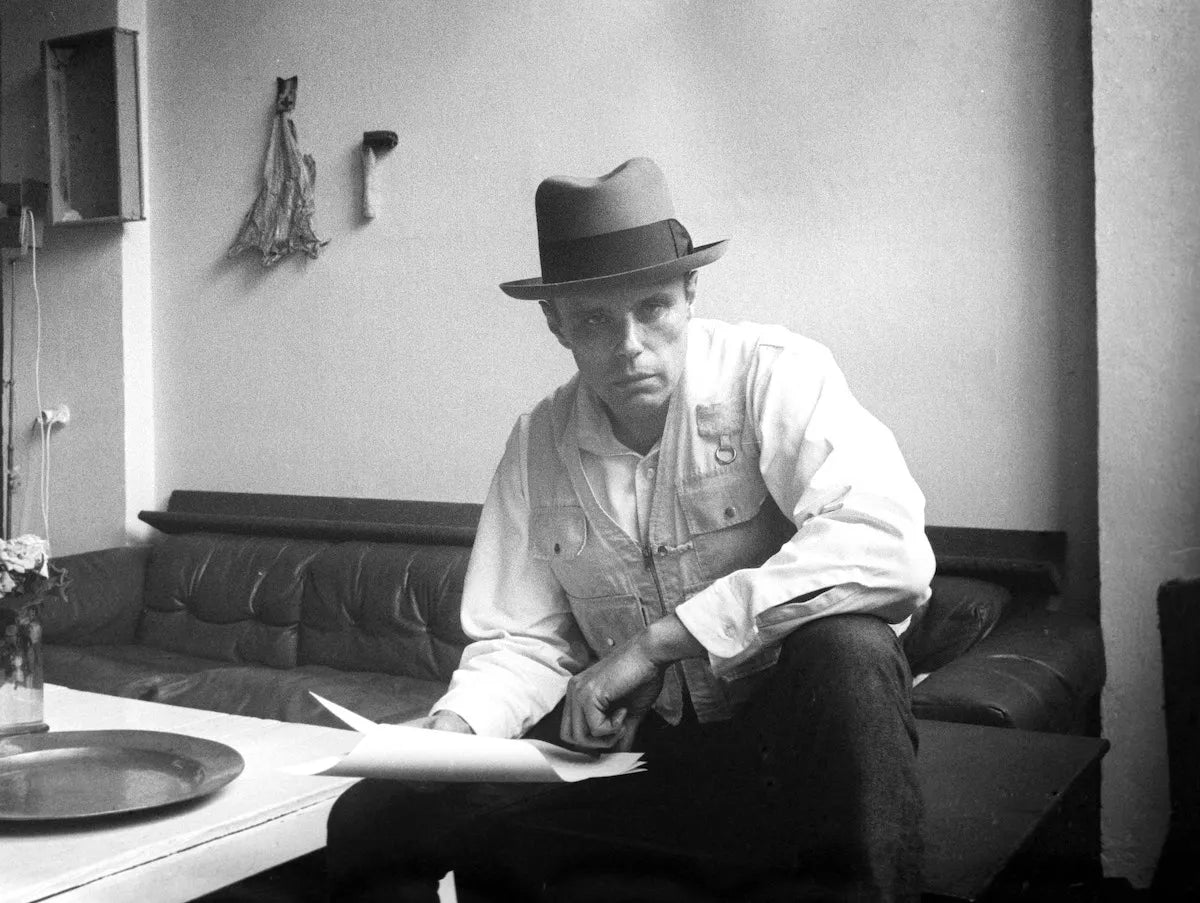
What are the characteristics of Joseph Beuys's works?
Joseph Beuys's works are known for their unique and distinctive characteristics that distinguish him as one of the most influential and provocative artists in contemporary art. Here are some of the main characteristics of his works:
Unusual Materials: Joseph Beuys often used unconventional and organic materials in his works, such as felt, fat, beeswax, copper and stones. These materials were loaded with symbolic meaning and often related to his own biography, such as the frequent use of felt and fat in reference to the plane crash he survived during World War II.
Performances and Actions: Joseph Beuys was a pioneer in incorporating performances and actions into his artistic practice. Their performances often involved rituals and interactions with the audience. A notable example is the work "I Like America and America Likes Me" (1974), in which Beuys spent three days locked in a room with a wild coyote.
Art as Education: Joseph Beuys believed that art had educational and political potential. He considered his actions and teachings at the Art Academy as a form of "social sculpture", believing that art could be a transformative force in society.
Symbolic Elements: His works were full of symbolic and mythological elements. Joseph Beuys often used objects such as gloves, hats and batons in his performances, giving these objects a deep meaning.
Political Involvement: Joseph Beuys was involved in political and social issues, and his works often reflected his activism. He founded the "German Student Party" and defended radical political ideas.
Nature and Ecology: In his final years, Joseph Beuys focused on defending nature and ecology. His work "7000 Eichen" (7000 Oaks) is a striking example of his ecological activism, involving the planting of oaks as an act of environmental regeneration.
The Dimension of Time: Joseph Beuys often worked with the notion of time in his works, not only in the duration of his performances, but also in the incorporation of temporal elements, such as clocks and schedules.
Use of Language: Language played an important role in the works of Joseph Beuys, whether in written texts, public pronouncements or conversations with audiences during his performances. I saw communication as a fundamental tool in art.
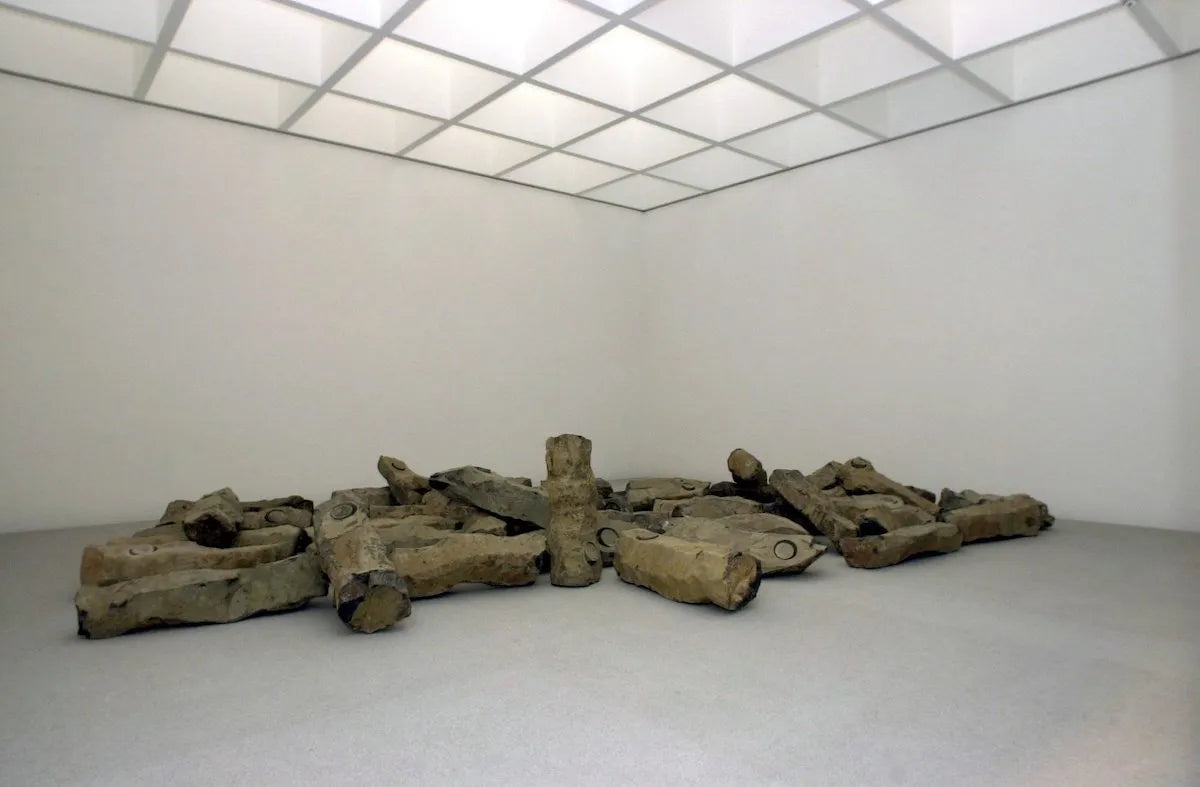
7000 Eichen" (7000 Oaks)
"7000 Eichen" (or "7000 Oaks") is one of the most iconic and significant works by Joseph Beuys, created in Kassel, Germany, during Documenta 7, an important contemporary art exhibition, in 1982. This work is often cited as a notable example of Beuys's engagement with politics and ecology through art.
The essence of "7000 Eichen" involved planting 7,000 oak trees around the city of Kassel. Each oak was planted together with a basalt stone, and this combination of oaks and stones formed a large-scale sculptural installation. The project was conceived as an act of environmental regeneration and a statement on the need to preserve nature and ecology in the face of environmental challenges.
The choice of oak as the installation's main tree was not random. Joseph Beuys considered the oak a powerful and symbolic tree, associated with resistance and strength. Furthermore, the oak is a tree that can live for many centuries, which reinforced the idea that this work was a long-term commitment to the land and the environment.
The "7000 Eichen" project was a collaboration between Joseph Beuys and the city of Kassel, and the idea behind the work was that the process of planting and growing the oaks would unfold over several decades, serving as a lasting reminder of the commitment with environmental preservation. Joseph Beuys believed that art had the power to bring about changes in social and political consciousness, and this work was a tangible expression of his vision.
"7000 Eichen" not only emphasized the importance of ecology and nature in Beuys's work, but also helped to draw attention to environmental issues at a time when ecological awareness was becoming increasingly relevant. Joseph Beuys's work continues to be an inspiring example of how art can be used as a means of ecological and social advocacy, and his influence on environmental art and activist art persists to this day.
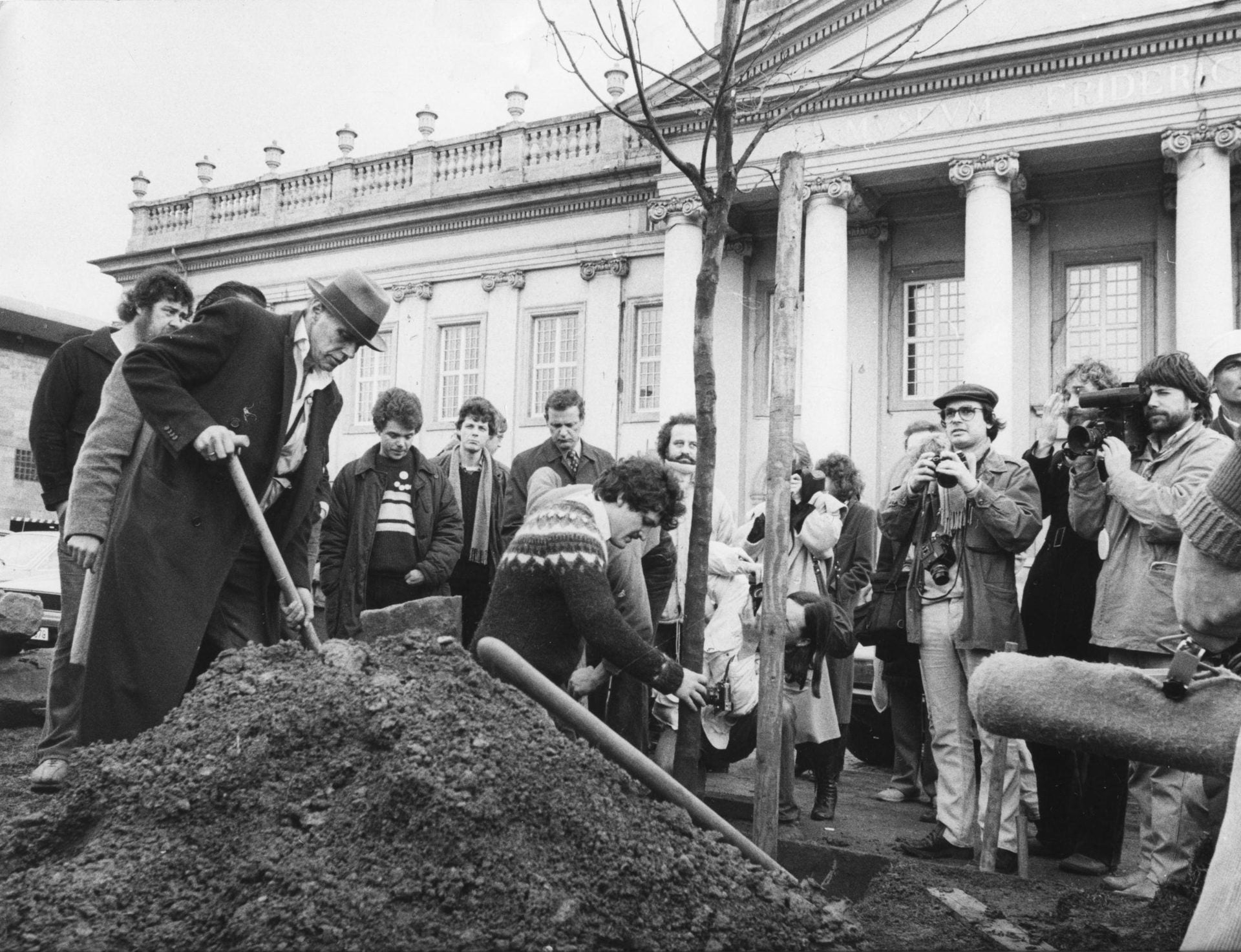
"I Like America and America Likes Me" (1974)
"I Like America and America Likes Me" is one of Joseph Beuys' most notable performances, performed in May 1974 at the René Block Gallery in New York. This work is often cited as one of the landmarks in the history of performance art and exemplifies Joseph Beuys' unique approach to art.
The performance involved Joseph Beuys spending three days locked in a room in the gallery with a wild coyote. Joseph Beuys was separated from the coyote by a felt partition, but they shared the same space during the performance period. Joseph Beuys was also wrapped in a felt blanket, holding a staff and wearing a felt-soled shoe. The performance was documented in photographs and films.
"I Like America and America Likes Me" was conceived by Joseph Beuys as an exploration of the relationships between humanity, nature and culture, as well as a statement about the relationship between the United States and Europe, especially in relation to history and colonialism. The coyote was chosen for its symbolism in Native American mythology and as a symbol of wild nature.
The performance generated a series of interpretations and debates. Some saw the relationship between Joseph Beuys and the coyote as a symbol of confrontation and tension, while others saw it as an attempt at communication and reconciliation between man and nature. The presence of felt, a material frequently used by Joseph Beuys in his works, also added layers of symbolic meaning.
"I Like America and America Likes Me" exemplifies Joseph Beuys's approach to art as a form of action, communication and transformation. The work challenged the conventions of the time and explored complex themes related to culture, nature and society. It remains an influential work in the history of performance art and reflects Joseph Beuys's commitment to using art as a means of provoking reflection and dialogue about fundamental questions of the human condition.
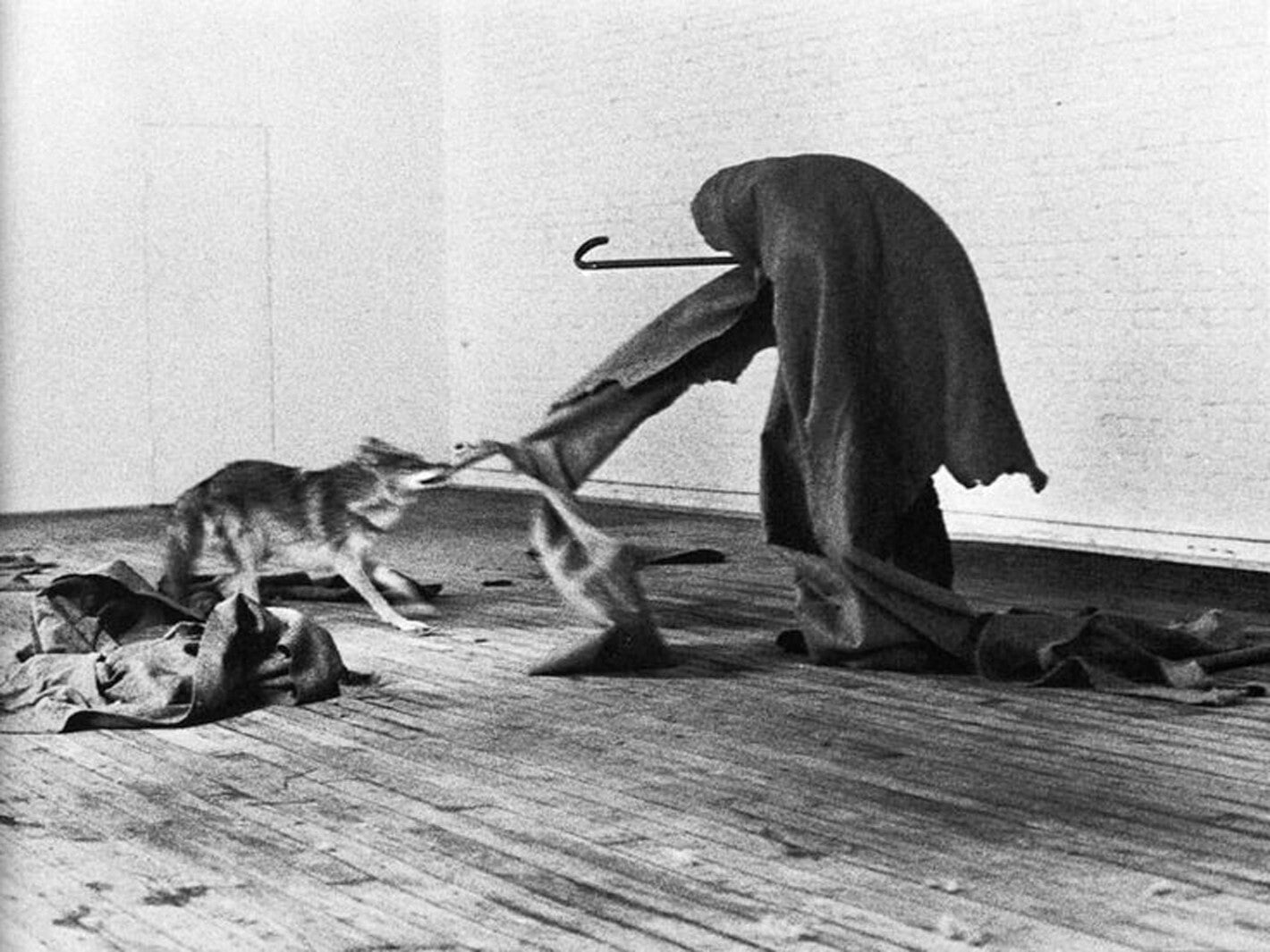
What is the impact of Joseph Beuys on contemporary art?
Joseph Beuys's impact on contemporary art is profound and lasting. Widely recognized as a seminal figure in 20th century art and his influence extends across many areas of art and culture. Here are some of the key aspects of Beuys's impact on contemporary art:
Expanding the Limits of Art: Joseph Beuys challenged and expanded the traditional boundaries of art. His incorporation of performances, actions and conceptual elements into art contributed to the expansion of conventional definitions of art. It helped establish the idea that art need not just be a physical object, but also an experience and a conceptual expression.
Art as Activism and Education: Joseph Beuys saw art as a tool for social and political change. His approach to "social sculpture" and his involvement in political activism demonstrate how he believed that art had the power to provoke discussion and transformation in society. He also emphasized the importance of education as an integral part of artistic practice, influencing generations of artists who saw pedagogy as an art form.
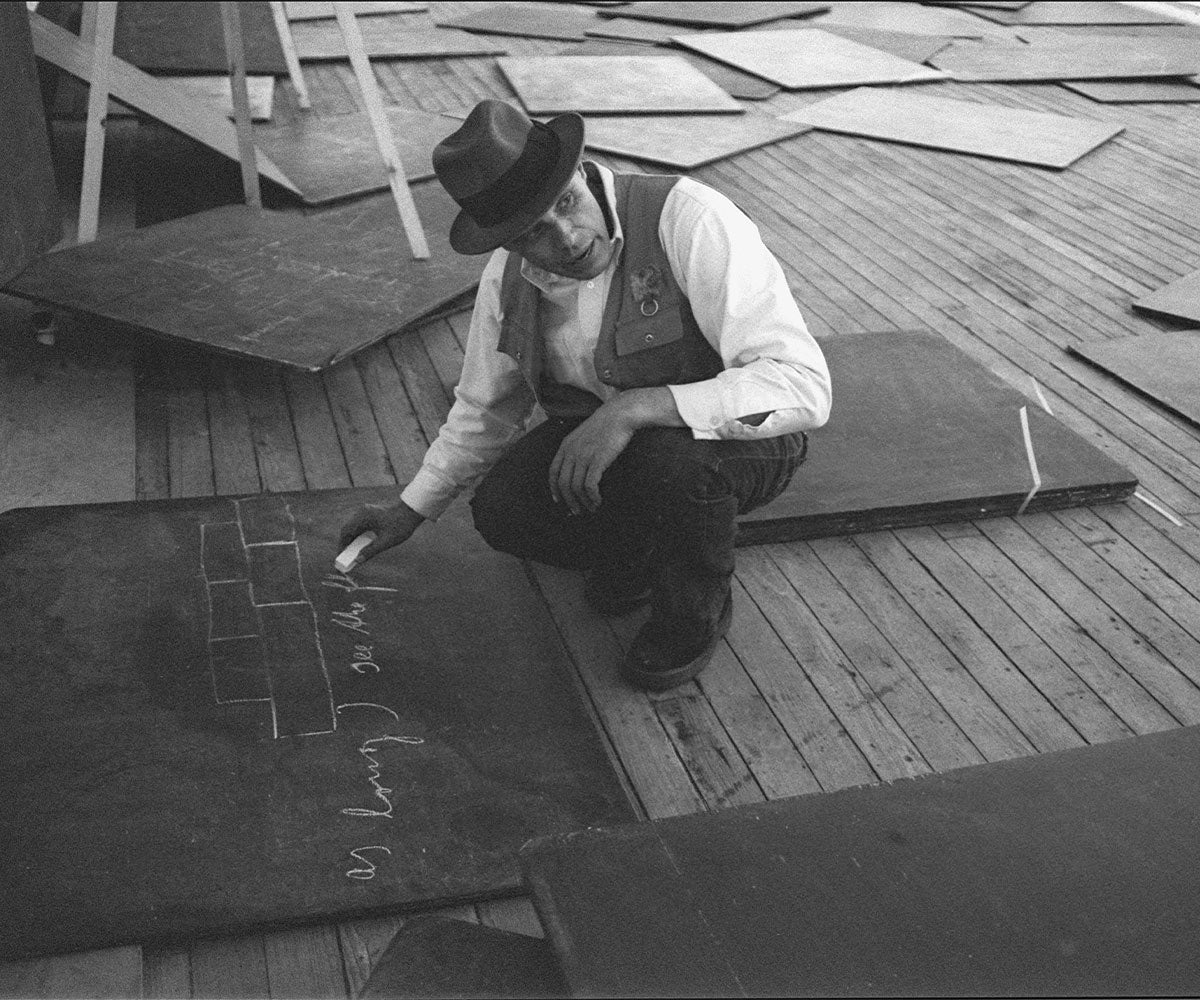
Use of Unconventional Materials: The choice of unconventional materials, such as felt, fat and beeswax, has become a striking feature of his work. This has inspired other artists to explore unusual materials and to consider the symbolic and cultural significance of materials in their own works.
Ecological and Environmental Approach: Joseph Beuys was one of the first artists to address environmental issues in his work, promoting ecology and environmental preservation. His ecological actions, such as "7000 Eichen" (7000 Oaks), influenced contemporary environmental art and eco-art, highlighting the interaction between art and nature.
Impact on Performance Art: His pioneering practice of artistic performances and actions, often with ritualistic elements, had a significant impact on performance art. Subsequent artists such as Marina Abramović, were influenced by his approach to performance as a means of expression and communication.
Continuation of Political and Social Dialogue: Joseph Beuys continued to be an influential voice in political and social dialogue, using his art and public presence to address pressing issues. His passion for social justice and his radical political views continue to inspire artists involved in social and political issues.
Lasting Legacy: Even after his death in 1986, Joseph Beuys' legacy continues to resonate in contemporary art. His multidisciplinary approach, his fusion of art, politics and education, and his willingness to challenge established conventions left an indelible mark on 20th century art and continue to influence future generations of artists.
Joseph Beuys is widely considered one of the most influential artists of the 20th century, not only for his artistic innovations, but also for his dedication to social change and his ability to inspire critical thinking and action through art. His impact on contemporary art is undeniable and will endure as a testament to his visionary vision of art as a means of transformation and awareness.
